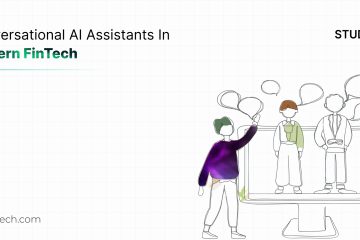The positive campaign for cryptocurrency has picked up at a feverish pace despite the turbulent economic times we live in – courtesy, the pandemic. And what is even more interesting is how cryptocurrencies have proved to be exceptionally resilient, as opposed to fiat currencies. What’s contributed to this? Probably the momentous leap in the accessibility of global high-speed internet and digitization.

As we speculate, it’s important to acknowledge how algorithmic science has led to a new found interest as well as a surge in the popularity of cryptocurrency trading. We may not realize it but sophisticated algorithms are already a ubiquitous part of our everyday lives in the form of traffic lights, travel schedules, our Instagram feeds, and a whole lot more. Latest to join the algorithmic bandwagon is cryptocurrency trading, and one of its biggest feats yet is how crypto bot trading algorithms are truly reshaping the ways of trading.
Read ahead to explore how algorithmic bot trading has managed to create an extremely promising space for itself over the last few years.
But first – how exactly do we define crypto algorithmic trading?
At its most fundamental level, algorithmic trading is the process of buying or selling a token or coin based on a set of predefined rules tested on historical data. These rules are based on several parameters such as indicators, charts, technical analysis, or simple cryptocurrency trading basics. For instance – imagine that you plan to buy a specific crypto token under the assumption that it ends in losses for an entire week. You would get to frame a rule as an algorithm and then actually go ahead and automate it so that your buy order is met when the stipulated market conditions are met. And to customize it – you could probably limit your stop loss and set a specific target in the algorithm to execute the trade a lot more easily.
As innovation makes its way in this ever-evolving field of crypto trading, here are a few interesting concepts that are making the rounds about how automation and crypto algorithmic trading will play out in the future.
Confidence boosting pre-trade insights
As is the case with anything in the digital age today – there is the issue of information overload for traders as they continue to be overwhelmed with a wide range of configurable settings and new algorithmic trading strategies that are evolving at a dynamic pace.
Asset managers have their tasks cut out as they need to choose which strategy works best to improve the quality of their executions alongside helping traders and clients bring down trading costs. Here is where trend-based recommendations can come in handy.
Designed to equip traders with pre-trade information that offers better insight into the performance of all available algos, automated algo recommendations help provide more pre-trade confidence of which trading algo or customized algo to use in any given situation.
The third generation of algos will be adaptive and will deploy Machine Learning (ML) technology and real-time insights so that algos can self-adjust when working the trade.
Marketplace trading and opinion mining
The integration of social networks for crypto trading has teased apart its complexity and made crypto trading a lot simpler to access, especially for novice traders. Through the fluid use of social trading platforms, marketplace trading presents traders with a gold mine of opinionated data, guiding them with trends based analyses. From static metric based analysis, to lexical analysis, to context based mining, ML techniques have rapidly been gauging sentiments based purely on context extracted using advanced Natural Language Processing (NLP). With this kind of opinion mining, algo trading is becoming more advanced and adapting to shifts and changes in the market.
Crypto market surveillance
Surveillance is among the most important practices in crypto markets as it allows for precise reports of all crypto market activities. Data gathered through surveillance improves market awareness and enables evidence-based decision-making in trading. However, the use of satellite data in algo trading continues to be met with criticism. The flip side most likely stands as the notion of the lack of equal access to such data potentially brings negative repercussions to automated trading. However, with the fast-paced nature of algorithmic trading innovations, this too could potentially be resolved, and the industry might fully stand to gain from it.
So, what does the future hold?
As for the future, it is safe to say that we will witness a high level of automation of the crypto market that will be starkly different from what we see today. These advanced algorithms will become even more complex as algorithmic trading will be able to adjust to different patterns using Artificial Intelligence (AI). For instance, you will be able to predefine a set of specific rules for trading into your strategy. And with market fluctuations, if the tide turns against what you’ve set, the program will alter to match the new market changes. Although it may sound like it, this does not mean that it will all be entirely automated as someone will still need to monitor the progress of AI, though the system by itself will become self-sustaining.
We can expect crypto algorithmic trading to move deeper into practical ML techniques, which are set to handle real-time interpretation and integration of data from a myriad of different sources. Continuing to evolve from simple routing instructions to context-based rulebooks that measure market conditions such as volatility, volume, hit ratios, and latencies, these algorithm-driven crypto trading bots can make crypto a level playing field, allowing you a leg up across crypto markets!
Citations
1.Sustainable Futures: An Agenda for Action, Raphael Kaplinsky, https://www.google.co.in/books/edition/Sustainable_Futures/boQzEAAAQBAJ?hl=en&gbpv=1 15 June 2021
2. An Analysis of Cryptocurrency, Bitcoin, and the Future, https://www.researchgate.net/publication/316656878_An_Analysis_of_Cryptocurrency_Bitcoin_and_the_Future, October 2016
3. How the cryptocurrency market performed during COVID 19? A multifractal analysis, Emna Mnif, Anis Jarboui, and Khaireddine Mouakhar, https://www.ncbi.nlm.nih.gov/pmc/articles/PMC7299874/, June 2020


